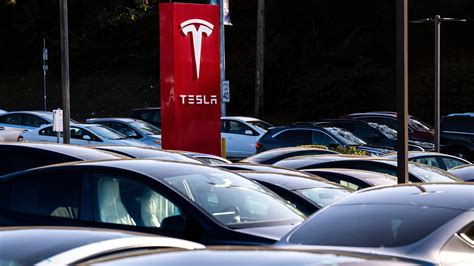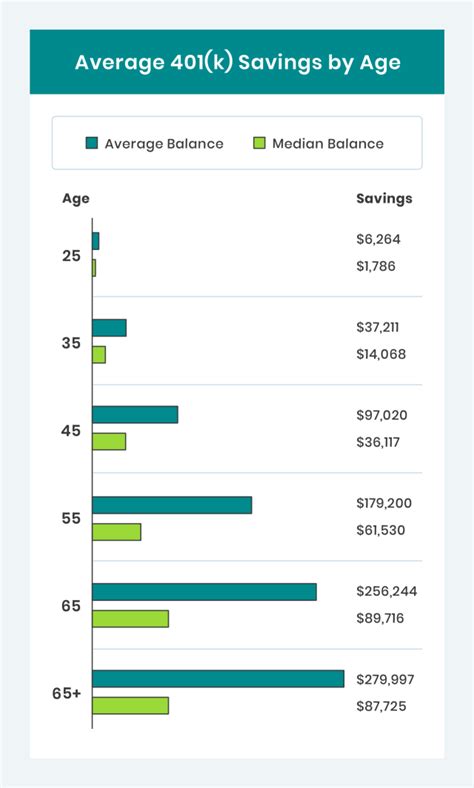
Tesla’s sales in China experienced a significant downturn in April, signaling potential challenges for the electric vehicle giant in a crucial market. Sales of Chinese-made Tesla vehicles plummeted 62% compared to the previous month, raising concerns about increased competition and shifting consumer preferences.
Tesla Sales Plunge in China: Is the EV Reign Ending?
Tesla’s sales in China experienced a dramatic 62% drop in April compared to March, according to data from the China Passenger Car Association (CPCA). This substantial decline raises critical questions about the electric vehicle (EV) leader’s position in the world’s largest auto market and whether it signals a broader shift in the competitive landscape. The drop, from 62,398 vehicles in March to just 26,671 in April, marks a concerning trend for Tesla, particularly given the ongoing price war and increasing competition from domestic EV manufacturers.
Sharp Decline and Market Context
The April sales figures represent a stark contrast to Tesla’s performance in the first quarter of 2024, where the company largely maintained its market share. However, the latest data suggests that Tesla is facing mounting pressure. The CPCA data reflects wholesale figures, encompassing both domestic sales and exports. While export figures can fluctuate, the magnitude of the decline indicates significant softening in local demand.
Several factors contribute to this downturn. Firstly, the intensifying competition within the Chinese EV market is a key driver. Domestic automakers like BYD, Nio, and Xpeng are aggressively expanding their product portfolios, offering vehicles with competitive features and often at lower price points. These companies are also leveraging their understanding of local consumer preferences, which can provide them with an edge over foreign brands.
Secondly, the ongoing price war in China’s EV sector is impacting profit margins and potentially influencing consumer behavior. Tesla has initiated several price cuts over the past year to stimulate demand, but this has also squeezed profitability and created uncertainty among consumers who may delay purchases in anticipation of further price reductions.
Thirdly, macroeconomic factors, such as slowing economic growth in China, could be playing a role. Consumer confidence has been affected by economic uncertainties, which could lead to a decrease in overall auto sales, including EVs.
Competitive Landscape Heats Up
The Chinese EV market is arguably the most competitive in the world. Domestic brands are rapidly innovating and capturing market share. BYD, in particular, has emerged as a formidable competitor, offering a wide range of electric and hybrid vehicles that appeal to a broad customer base. Other companies like Nio and Xpeng are focusing on high-end EVs with advanced technology, targeting a different segment of the market.
“Competition is fierce in China, with numerous domestic players vying for market share,” noted a recent report by Canalys, a technology market analysis firm. “Tesla’s dominance is being challenged as local brands offer compelling alternatives.”
The price war initiated by Tesla has further intensified the competitive pressure. While these price cuts have helped Tesla maintain sales volume in some periods, they have also eroded profit margins and forced other automakers to follow suit, creating a race to the bottom.
Tesla’s Response and Future Strategies
Tesla has not yet publicly commented on the April sales figures. However, the company is likely to respond with a combination of strategies to address the challenges in the Chinese market.
One potential strategy is to introduce new models or variants specifically tailored to Chinese consumers. Tesla could also enhance its existing vehicles with features that are particularly popular in China, such as advanced driver-assistance systems (ADAS) or improved infotainment options.
Another approach is to expand its charging infrastructure in China. A robust charging network is essential for EV adoption, and Tesla has been investing in building out its Supercharger network across the country. However, competition from local charging providers is also increasing.
Furthermore, Tesla could explore partnerships with Chinese companies to leverage their local expertise and distribution networks. Collaborations with technology firms or automotive suppliers could help Tesla gain a better understanding of the Chinese market and improve its competitiveness.
Tesla’s Shanghai factory remains a crucial asset. The Gigafactory Shanghai not only serves the Chinese market but also exports vehicles to other regions. Optimizing production and logistics at this facility will be essential for Tesla to maintain its global competitiveness.
Potential Implications and Industry Impact
The decline in Tesla’s sales in China has broader implications for the EV industry. It highlights the challenges faced by foreign automakers in navigating the complex and rapidly evolving Chinese market. It also underscores the importance of innovation, localization, and competitive pricing in maintaining market share.
If Tesla’s struggles in China persist, it could impact the company’s overall financial performance and growth prospects. China is a key market for Tesla, and a significant slowdown in sales could put pressure on its global profitability.
The situation could also lead to a consolidation of the EV market in China, with stronger domestic players gaining further advantage. This could result in a more fragmented market with increased competition and pricing pressure.
Expert Opinions and Analysis
Industry analysts have expressed mixed views on Tesla’s prospects in China. Some believe that the April sales figures are a temporary setback and that Tesla can regain its momentum through new product launches and strategic initiatives. Others are more cautious, citing the intensifying competition and the potential for further price wars.
“Tesla needs to differentiate itself in the Chinese market,” said Cui Dongshu, secretary-general of the CPCA. “It needs to offer unique features and value propositions that appeal to local consumers.”
Gene Munster, managing partner at Deepwater Asset Management, noted, “I still view Tesla as a long-term winner, but they are in the midst of a challenging transition. They need to navigate the short-term market dynamics in China, while continuing to execute on their long-term vision.”
Long-Term Outlook
Despite the recent challenges, the long-term outlook for the EV market in China remains positive. The Chinese government is strongly supporting the adoption of EVs through subsidies, tax incentives, and regulatory measures. The demand for EVs is expected to continue to grow as consumers become more environmentally conscious and as the cost of EVs decreases.
Tesla is still a major player in the Chinese EV market, and the company has a strong brand reputation and a loyal customer base. However, Tesla needs to adapt to the changing market dynamics and address the challenges posed by domestic competitors. The company’s success in China will depend on its ability to innovate, localize, and compete effectively in a highly competitive environment.
Frequently Asked Questions (FAQ)
Q1: What caused Tesla’s sales to drop so significantly in China in April?
A1: Several factors contributed to the 62% drop in sales. These include intensifying competition from domestic EV manufacturers like BYD, Nio, and Xpeng, the ongoing price war in the Chinese EV sector, and potentially, macroeconomic factors like slowing economic growth affecting consumer confidence. These combined factors significantly impacted Tesla’s sales volume.
Q2: How does Tesla’s current situation in China compare to its performance in the past?
A2: The sharp decline in April contrasts with Tesla’s performance in the first quarter of 2024, where the company largely maintained its market share. Historically, Tesla has been a dominant player in the Chinese EV market, but the recent data suggests that its position is being challenged. The current situation represents a concerning trend for Tesla compared to its earlier strong performance.
Q3: What are Tesla’s main competitors in the Chinese EV market, and how are they performing?
A3: Tesla’s main competitors include BYD, Nio, and Xpeng. BYD has emerged as a formidable competitor, offering a wide range of electric and hybrid vehicles. Nio and Xpeng are focusing on high-end EVs with advanced technology. These domestic companies are aggressively expanding their product portfolios and capturing market share, posing a significant challenge to Tesla’s dominance.
Q4: What strategies might Tesla employ to regain market share in China?
A4: Tesla might consider several strategies, including introducing new models specifically tailored to Chinese consumers, enhancing existing vehicles with features popular in China (like advanced driver-assistance systems), expanding its charging infrastructure, and exploring partnerships with Chinese companies to leverage local expertise. These strategies aim to improve competitiveness and appeal to local preferences.
Q5: What are the broader implications of Tesla’s sales decline in China for the global EV industry?
A5: Tesla’s struggles highlight the challenges faced by foreign automakers in the competitive Chinese market. It underscores the importance of innovation, localization, and competitive pricing. If the decline persists, it could impact Tesla’s financial performance and potentially lead to a consolidation of the EV market in China, with stronger domestic players gaining further advantage. The global EV industry will be watching closely to see how Tesla responds to these challenges.
Detailed Analysis of Factors Affecting Tesla’s Sales in China
The precipitous drop in Tesla’s sales figures for April demands a closer examination of the underlying factors at play. While the headline number is alarming, a deeper dive into the dynamics of the Chinese EV market provides a more nuanced understanding of the challenges Tesla faces.
1. Intensified Competition: The Rise of Domestic EV Brands
The Chinese EV market is no longer a playground dominated by Tesla. A multitude of domestic brands have emerged, each vying for a piece of the rapidly growing pie. These companies possess a deep understanding of local consumer preferences, allowing them to tailor their products and marketing strategies accordingly.
- BYD: Arguably Tesla’s most formidable competitor, BYD offers a comprehensive range of electric and plug-in hybrid vehicles. The company’s vertically integrated supply chain, which includes battery production, gives it a cost advantage. BYD’s recent surge in sales has made it a leading force in the Chinese auto market. Their focus on affordability and practicality resonates strongly with a large segment of Chinese consumers.
- Nio: Nio targets the premium segment of the EV market with its technologically advanced and luxurious vehicles. Nio’s battery swapping technology, which allows drivers to quickly replace depleted batteries with fully charged ones, offers a unique selling proposition. The company’s focus on customer service and community building has also helped it cultivate a loyal following.
- Xpeng: Xpeng is another prominent player in the Chinese EV market, known for its advanced driver-assistance systems (ADAS) and stylish vehicle designs. Xpeng’s focus on innovation and technology has attracted a younger, tech-savvy customer base.
- Other emerging brands: Numerous other EV brands, such as Li Auto, Leapmotor, and Zeekr, are also gaining traction in the Chinese market. These companies are offering innovative products and services, further intensifying the competition.
2. The Price War: A Race to the Bottom?
Tesla’s decision to initiate a price war in China has had a profound impact on the market. While these price cuts initially boosted sales volume, they have also eroded profit margins and forced other automakers to respond in kind. The resulting price competition has created a challenging environment for all players, particularly those with higher cost structures.
The price war has also led to a degree of uncertainty among consumers. Potential buyers may delay their purchases in anticipation of further price reductions, which can negatively impact sales in the short term. Moreover, the constant price fluctuations can undermine brand value and create a perception of instability.
3. Macroeconomic Factors: Economic Slowdown and Consumer Confidence
China’s economic growth has slowed in recent months, raising concerns about consumer spending. Economic uncertainty can lead to decreased consumer confidence, which can negatively impact demand for big-ticket items like cars. While the Chinese government is taking measures to stimulate the economy, the impact on consumer behavior remains to be seen.
4. Shifting Consumer Preferences: Local Tastes and Innovation
Chinese consumers have unique preferences when it comes to car features and design. Domestic EV brands are often better positioned to cater to these preferences, as they have a deeper understanding of the local market.
For example, Chinese consumers tend to value spacious interiors, advanced infotainment systems, and sophisticated driver-assistance features. Domestic brands are increasingly offering vehicles with these features at competitive prices. Furthermore, local brands often excel at incorporating Chinese cultural elements into their vehicle designs, which can resonate strongly with consumers.
5. Supply Chain Disruptions and Production Issues
Although Tesla’s Gigafactory Shanghai has been a major success, it has also faced occasional supply chain disruptions and production challenges. These issues can impact production volumes and delivery times, which can negatively affect sales. The global chip shortage, for example, has affected automakers worldwide, including Tesla.
6. Government Policies and Regulations
The Chinese government plays a significant role in shaping the EV market through its policies and regulations. Government subsidies and tax incentives have been instrumental in promoting EV adoption. However, these policies can also change, which can create uncertainty for automakers. The government’s efforts to promote domestic EV brands can also create a challenging environment for foreign companies like Tesla.
Tesla’s Potential Responses and Strategies
In the face of these challenges, Tesla needs to adopt a comprehensive strategy to regain its footing in the Chinese market. Here are some potential approaches:
- Product Innovation and Localization: Tesla needs to continue innovating and introducing new models that cater to the specific needs and preferences of Chinese consumers. This could involve developing vehicles with longer ranges, more spacious interiors, or advanced driver-assistance systems tailored to Chinese driving conditions.
- Strengthening Brand Image and Customer Loyalty: Tesla needs to reinforce its brand image and cultivate customer loyalty. This could involve enhancing the ownership experience through improved customer service, exclusive events, and community-building initiatives.
- Expanding Charging Infrastructure: A robust charging infrastructure is crucial for EV adoption. Tesla needs to continue expanding its Supercharger network in China and partnering with local charging providers to increase charging accessibility.
- Strategic Partnerships: Collaborating with Chinese companies can help Tesla gain a better understanding of the local market and leverage their expertise. This could involve partnerships with technology firms, automotive suppliers, or even ride-hailing companies.
- Optimizing Production and Logistics: Tesla needs to optimize production and logistics at its Gigafactory Shanghai to ensure efficient operations and timely delivery of vehicles.
- Exploring New Business Models: Tesla could explore new business models, such as battery swapping or subscription services, to cater to the evolving needs of Chinese consumers.
- Aggressive Marketing and Promotion: Tesla needs to ramp up its marketing and promotional efforts to highlight its competitive advantages and differentiate itself from domestic brands.
- Improve Software and Connectivity: China has a very digitally connected population. Tesla should improve its software capabilities and connectivity features tailored to the Chinese market. This includes integrating local apps, improving voice control in Mandarin, and providing seamless integration with Chinese digital ecosystems.
- Focus on Autonomous Driving Development in China: While global autonomous driving efforts are underway, Tesla should focus on adapting its autonomous driving technology to the specific road conditions and driving behaviors in China.
- Supply Chain Localization: To reduce costs and mitigate risks associated with global supply chain disruptions, Tesla should further localize its supply chain in China.
- Data Security and Compliance: Adhering to China’s data security regulations is paramount. Tesla must ensure that it collects, stores, and processes data in compliance with local laws.
- Government Relations: Maintaining strong relationships with the Chinese government is crucial for Tesla’s long-term success.
- Energy Storage Solutions: As China invests heavily in renewable energy, Tesla could expand its energy storage solutions, such as Powerwall and Megapack, to support the country’s clean energy transition.
- Explore Opportunities in Lower-Tier Cities: While major cities like Beijing and Shanghai are saturated, there is significant potential for EV adoption in lower-tier cities. Tesla should explore opportunities to expand its presence in these markets.
- Develop Affordable Models: To compete with the growing number of affordable EVs from domestic brands, Tesla could consider developing a more budget-friendly model specifically for the Chinese market.
- Implement innovative sales strategies: Tesla could introduce innovative sales strategies such as online sales platforms, pop-up stores in shopping malls, and partnerships with local retailers to reach a wider audience.
- Enhance Customer Service and After-Sales Support: Providing excellent customer service and after-sales support is essential for building customer loyalty. Tesla should invest in training its service staff and expanding its service network.
- Participate in Industry Forums and Events: Actively participating in industry forums and events will help Tesla stay informed about the latest trends and developments in the Chinese EV market and build relationships with key stakeholders.
The Long-Term Outlook for Tesla in China
Despite the current challenges, the long-term outlook for Tesla in China remains uncertain but potentially positive. The Chinese EV market is expected to continue to grow rapidly in the coming years, driven by government support, increasing consumer awareness, and technological advancements.
Tesla still has a strong brand reputation and a loyal customer base in China. The company’s Gigafactory Shanghai provides it with a significant production advantage. However, Tesla needs to adapt to the changing market dynamics and address the challenges posed by domestic competitors.
The company’s success in China will depend on its ability to innovate, localize, and compete effectively in a highly competitive environment. If Tesla can execute its strategy effectively, it has the potential to remain a major player in the Chinese EV market for years to come. However, if it fails to adapt, it risks losing ground to its domestic rivals.
The developments in the coming months will be critical in determining Tesla’s long-term fate in the world’s largest auto market. The company’s ability to navigate the challenges and capitalize on the opportunities will ultimately determine its success in China.









